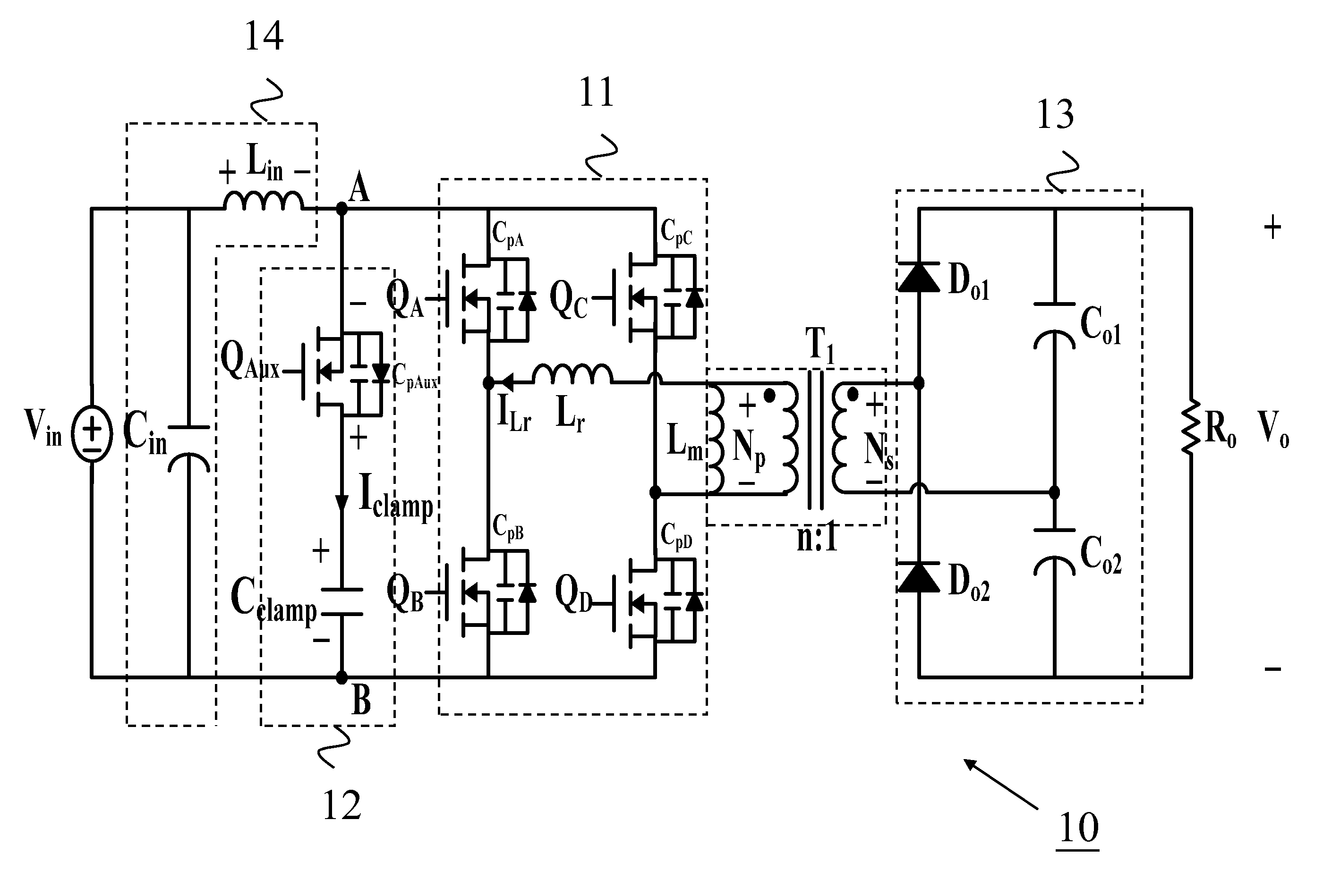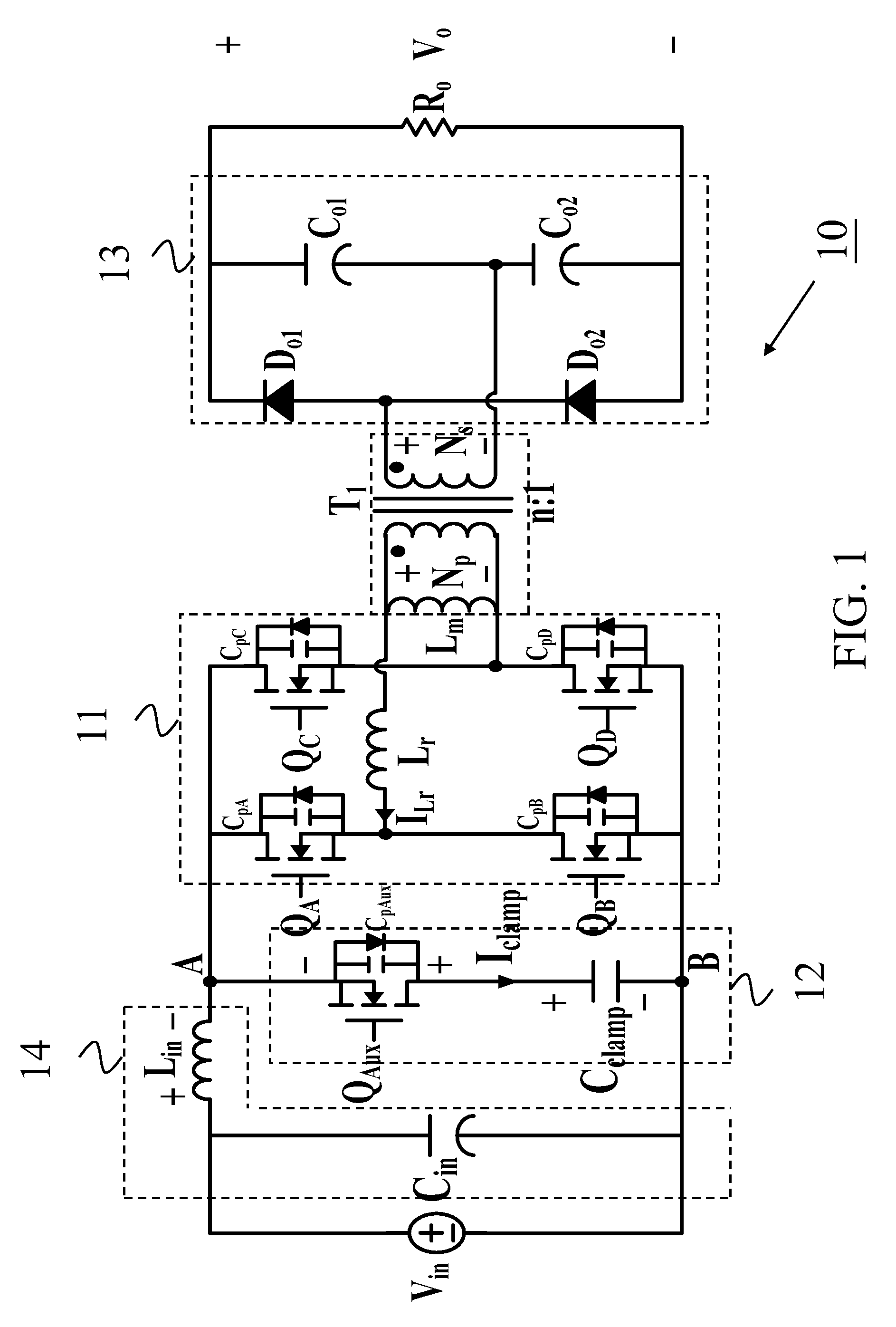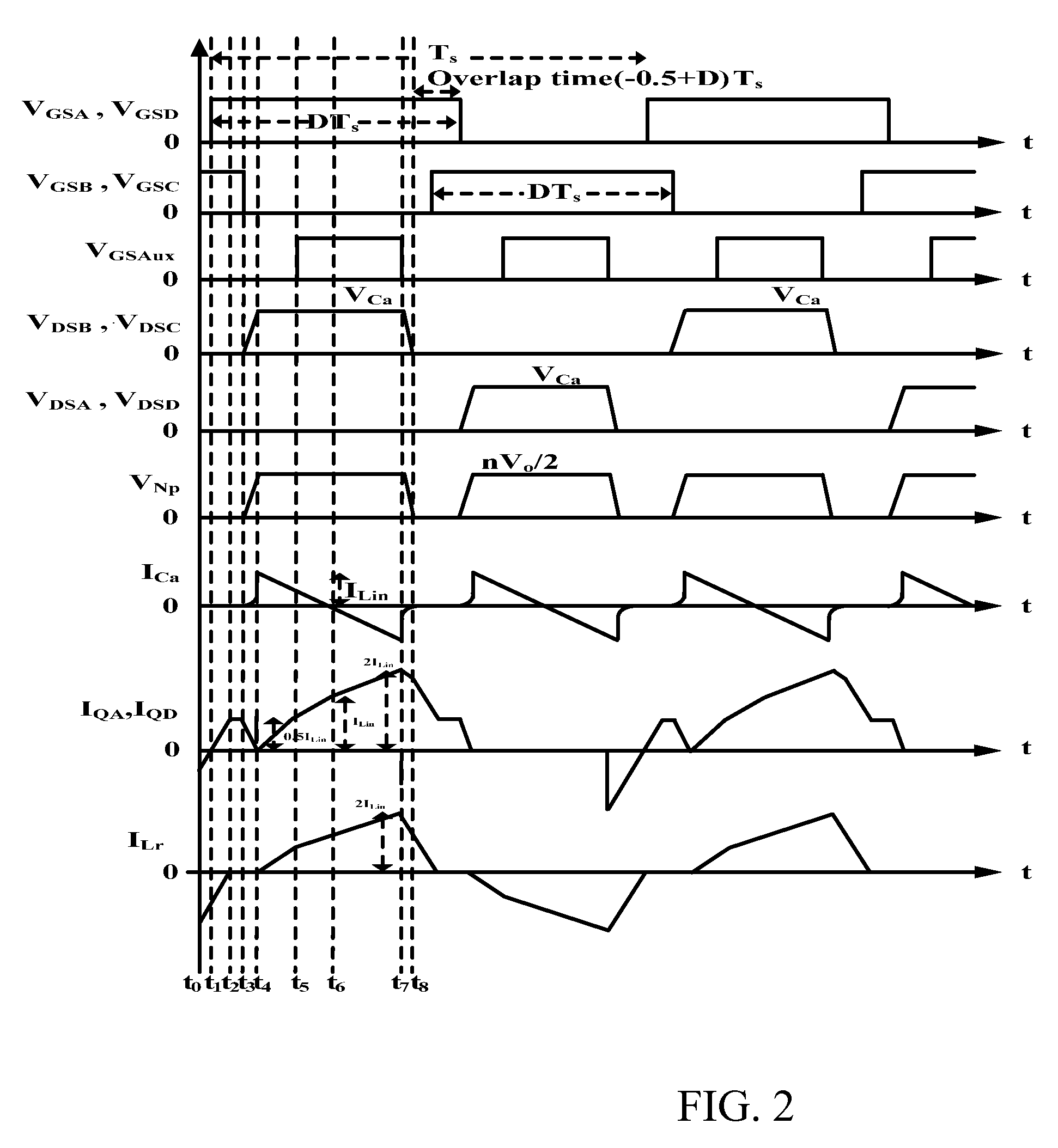DC to DC converting circuit
a converting circuit and converting circuit technology, applied in the direction of electric variable regulation, process and machine control, instruments, etc., can solve the problems of wasting electric power, narrow operation range in design and manufacture, and low power conversion efficiency of traditional dc to dc converters, so as to avoid surge voltage and improve voltage conversion efficiency.
- Summary
- Abstract
- Description
- Claims
- Application Information
AI Technical Summary
Benefits of technology
Problems solved by technology
Method used
Image
Examples
Embodiment Construction
[0012]The technical characteristic of clamping technology is to replace the Snubber diode by an active switch for operating in high frequency circumstance. Energy generated by surge voltage is fed back to input power source for reducing power loss of the voltage converter. The present invention is practiced by the clamping technology. For clarity of disclosure, and not by way of limitation, the detailed description of the invention is divided into the subsections that follow.
[0013]FIG. 1 is a circuit diagram of the DC to DC converting circuit of the present invention. As shown, the DC to DC converting circuit 10 is substantially composed of a transforming unit T1, a bridge rectifier unit 11, a clamping unit 12 and an output unit 13. The transforming unit T1 has a primary winding and a secondary winding. The bridge rectifier unit 11 is coupled to an input voltage Vin, having a first output terminal and a second output terminal coupled to both side of the primary winding respectively,...
PUM
 Login to View More
Login to View More Abstract
Description
Claims
Application Information
 Login to View More
Login to View More - R&D
- Intellectual Property
- Life Sciences
- Materials
- Tech Scout
- Unparalleled Data Quality
- Higher Quality Content
- 60% Fewer Hallucinations
Browse by: Latest US Patents, China's latest patents, Technical Efficacy Thesaurus, Application Domain, Technology Topic, Popular Technical Reports.
© 2025 PatSnap. All rights reserved.Legal|Privacy policy|Modern Slavery Act Transparency Statement|Sitemap|About US| Contact US: help@patsnap.com



